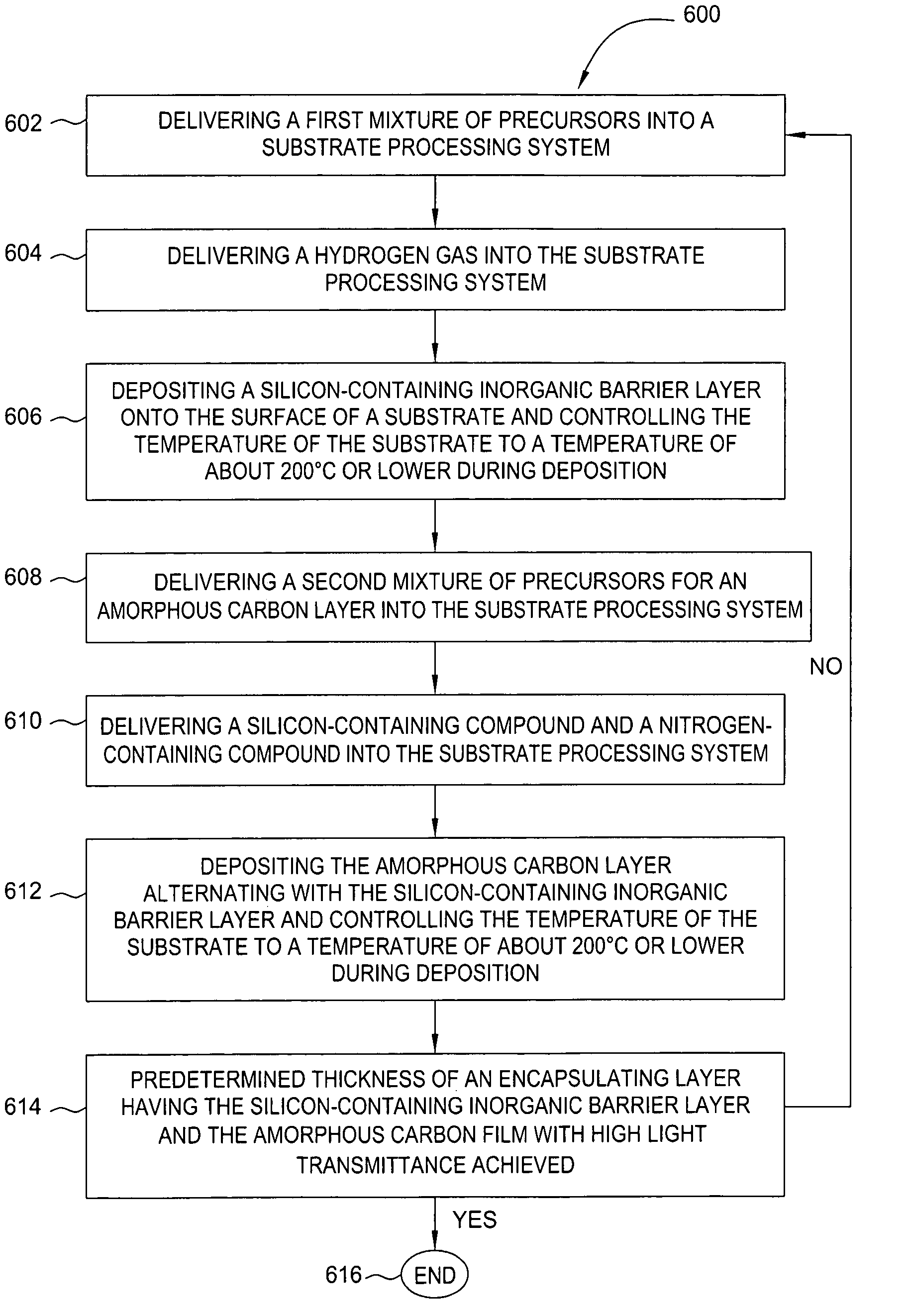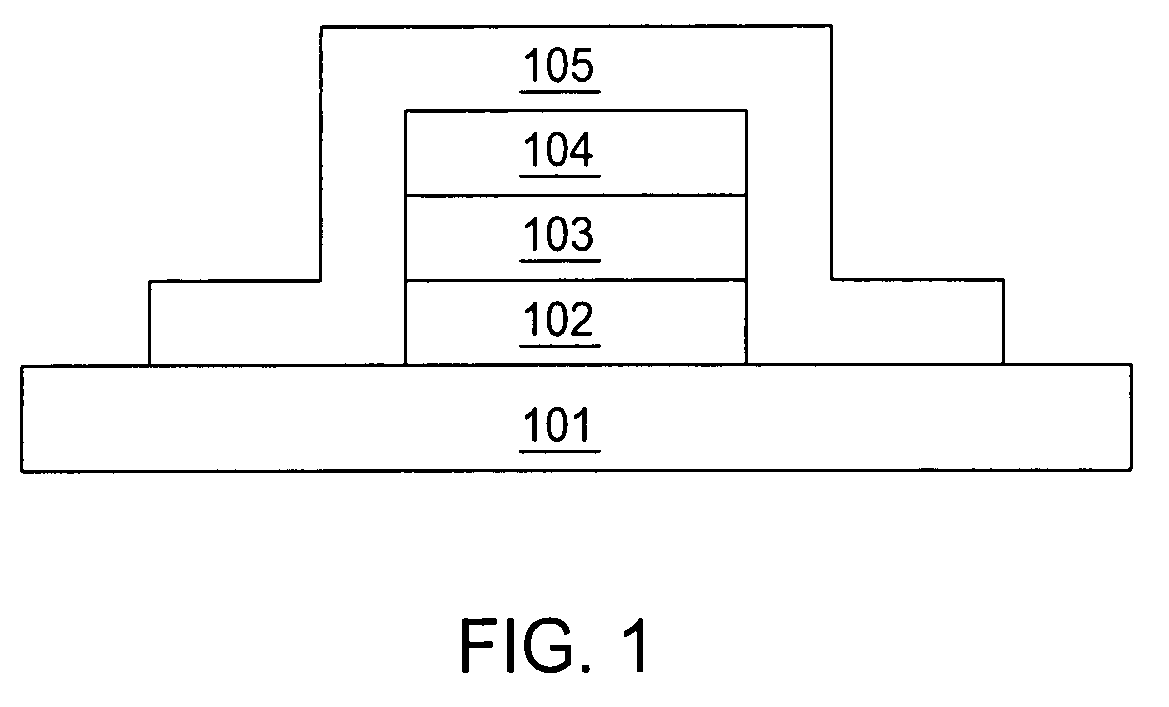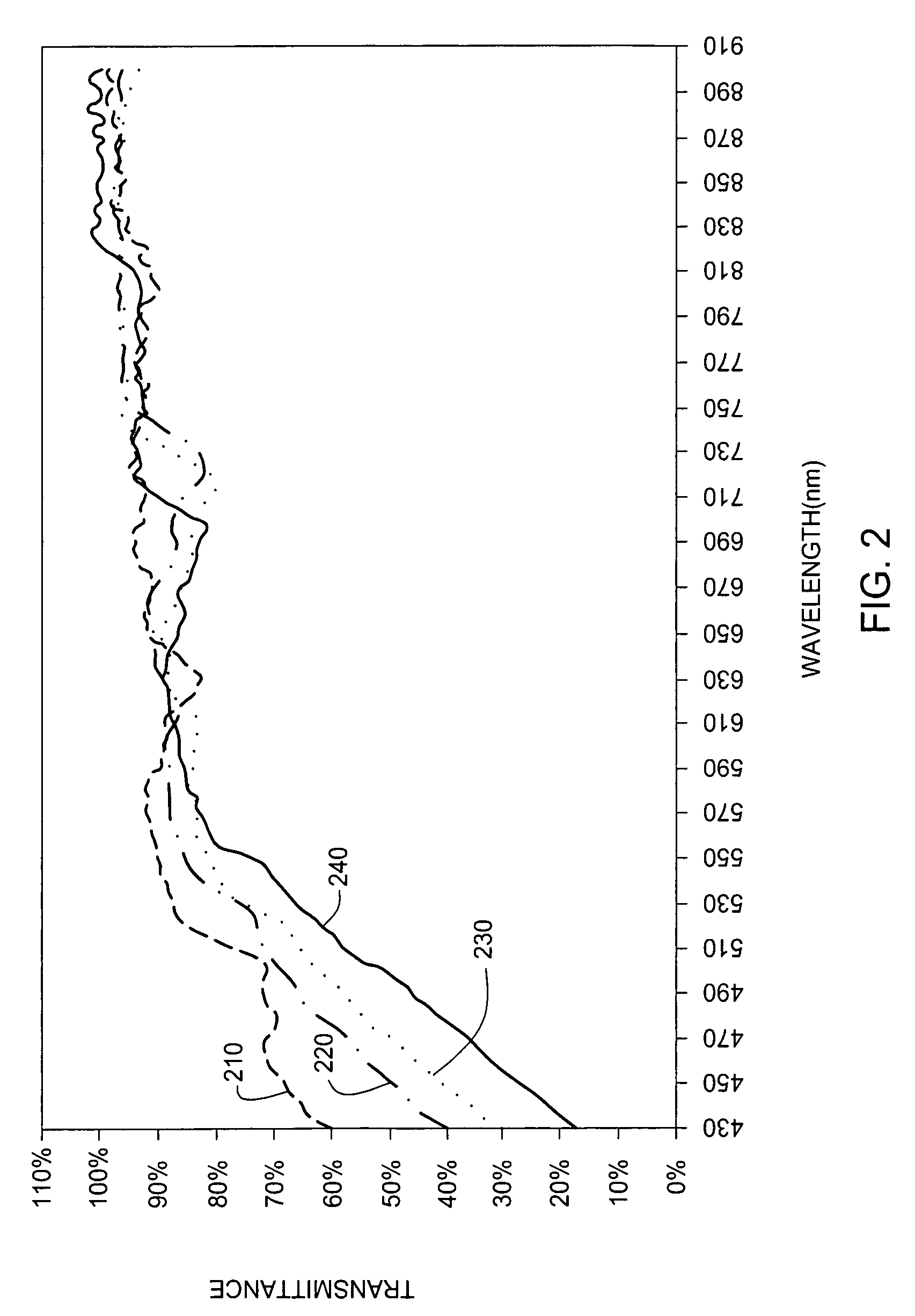Method to improve transmittance of an encapsulating film
a technology of encapsulating film and transmittance, which is applied in the direction of solid-state diffusion coating, plasma technique, superimposed coating process, etc., can solve the problems of material degradation and dark spot problems, limited life of display devices, and increase in drive voltage, so as to improve the film uniformity of amorphous carbon layers
- Summary
- Abstract
- Description
- Claims
- Application Information
AI Technical Summary
Benefits of technology
Problems solved by technology
Method used
Image
Examples
examples
[0102]The invention describes a method of depositing a carbon-containing material layer at a low temperature, such as about 200° C. or lower, onto a large area substrate surface. The invention overcomes the low light transmittance observed at lower wavelengths of between 430 nm and 570 nm as shown in FIG. 2 for a various film thicknesses and provides increased light transmittance of the carbon-containing material layer to about 80% or higher, such as about 90% or higher, about 95% or higher, or about 97% or higher, at all wavelengths in the visible light spectrum. The light transmittance of a carbon-containing material layer without the modification using methods of the invention may become worse when the film gets thicker, as shown in FIG. 2, having a thickness of 0.8 microns, 1.5 microns, 2 microns, and 3.2 microns for line 210, 220, 230, and 240, respectively, where light transmittance were lower as the film get thicker.
[0103]FIG. 7 is a graph for the results of the measured tran...
PUM
| Property | Measurement | Unit |
|---|---|---|
| temperature | aaaaa | aaaaa |
| wavelengths | aaaaa | aaaaa |
| wavelengths | aaaaa | aaaaa |
Abstract
Description
Claims
Application Information
 Login to View More
Login to View More - R&D
- Intellectual Property
- Life Sciences
- Materials
- Tech Scout
- Unparalleled Data Quality
- Higher Quality Content
- 60% Fewer Hallucinations
Browse by: Latest US Patents, China's latest patents, Technical Efficacy Thesaurus, Application Domain, Technology Topic, Popular Technical Reports.
© 2025 PatSnap. All rights reserved.Legal|Privacy policy|Modern Slavery Act Transparency Statement|Sitemap|About US| Contact US: help@patsnap.com



